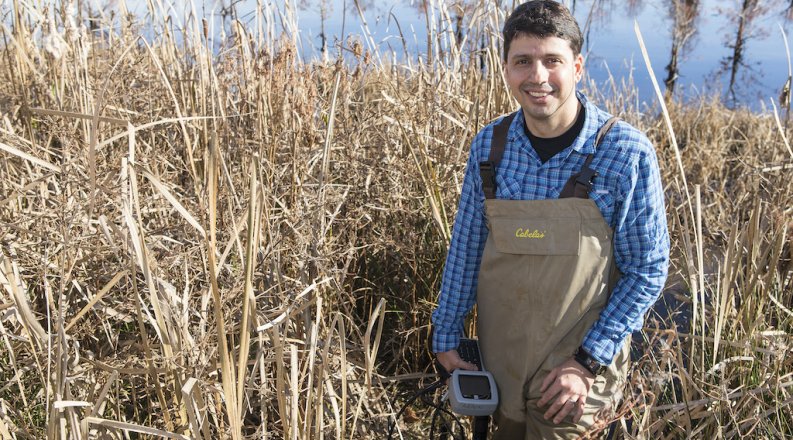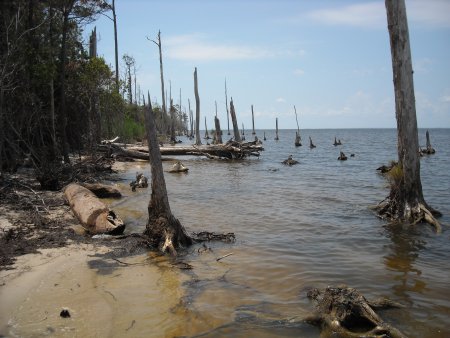By Victoria Bourne
All along the Atlantic Coast, eerie stands of dead trees dot wetlands and upland forests where hardwoods and evergreens once thrived. The skeleton-like sentinels of these “ghost forests” as they are known are no spooky Halloween tale; they’re a real-life consequence of a changing climate.
“Forested wetlands and upland forests are changing into marshes due to increased saltwater intrusion and more frequent flooding,” said Marcelo Ardón Sayão, a professor of forestry and environmental resources at North Carolina State University, in an “Ask an Expert” interview for the school’s College of Natural Resources News in October 2022.
Ardón Sayão, whose work focuses on environmental sciences, ecosystems, wetlands and streams, is the featured speaker for the fourth installment of the Paul W. Kirk Jr. Wetlands Lecture series on Sept. 28. The talk starts at 7 p.m. in the Big Blue Room at Chartway Arena, 4320 Hampton Blvd. It is free to the public, but seating is limited so RSVPs through ODU’s Office of Community Engagement are encouraged.
According to Ardón Sayão, whose research has included the Albemarle-Pamlico Peninsula of North Carolina, rising sea levels, increasing saltwater intrusion, and stronger storms – in particular hurricanes that follow periods of drought – have contributed to the emergence and spread of ghost forests as the trees are starved of the freshwater they need to survive.
And while expanding ghost forests are an indicator of our changing climate, the evolution of these once verdant ecosystems into marshlands is also evidence of nature’s resilience, “and that we can change our actions to avoid the worst impacts of climate change,” he said in “Ask the Expert.” His talk will cover how ghost forests are created, what they represent in the context of climate change and how research can help inform future restoration and mitigation strategies.
Ardón Sayão is an associate professor in the Department of Forestry and Environmental Resources at N.C. State. A native of Costa Rica, he moved to the U.S. to attend Gettysburg College in Pennsylvania, where he earned degrees in biology and environmental science. He got his Ph.D. in ecology from the University of Georgia and completed a postdoctoral position at Duke University. He joined N.C. State in 2016.
ODU’s wetlands lecture series, hosted by the College of Sciences, is presented in honor of former biology Professor Emeritus Paul W. Kirk Jr., Ph.D., who died in 2013. Kirk joined ODU’s faculty in 1971 and served as the associate dean for the College of Sciences and Health Professions and the graduate program director of biology. His research on hydrocarbon utilization by marine fungi informed the current understanding of marine ecosystems and biological remediation of oil spills, and he edited the first comprehensive study of the Great Dismal Swamp. He retired from ODU in 1992.
Kirk’s son, Dr. Allan Kirk ’83 and his wife, Robin, created the fund that supports this lecture series in honor of his father. Since 2016, the fund has also supported undergraduate and graduate student research in biology and oceanography through the Paul W. Kirk Jr. Wetlands Biology Research Award.
Previous lecture topics have included: “Wetlands and Climate Change” (2019, Ariana Sutton-Grier); “Living on the Edge: Chronicles of a Wetland Scientist” (2017, Chris Craft) and “Coastal Wetlands and Sea Level Rise: What Have We Learned” (2015, Irv Mendelssohn and Karen McKee).




